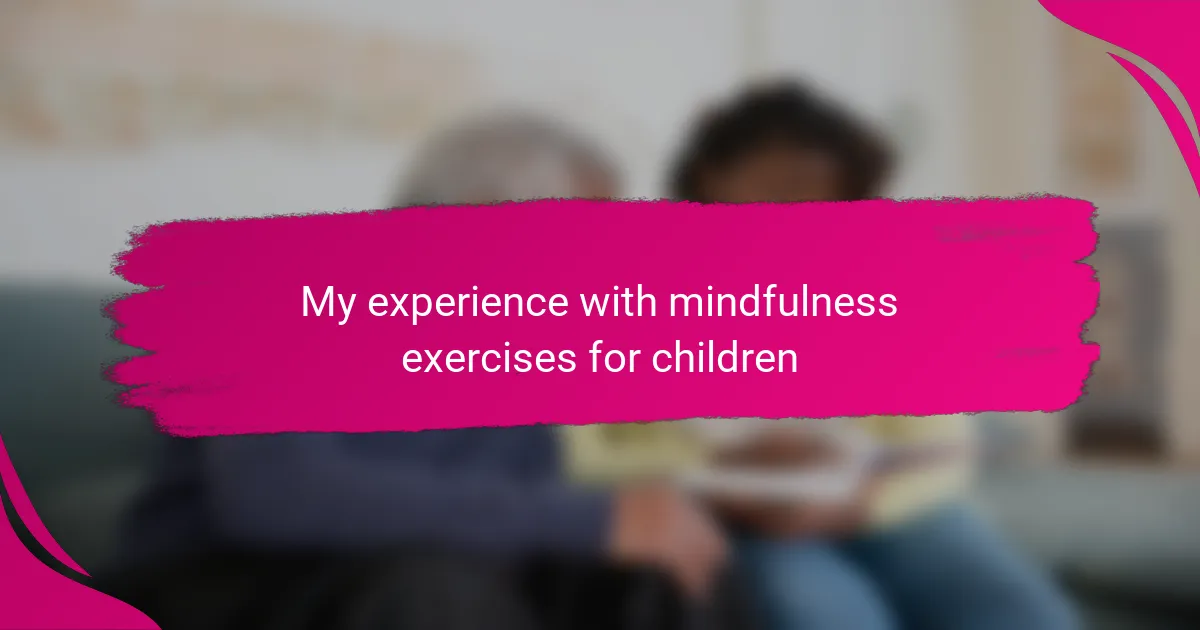Key takeaways
- Mindfulness helps children focus on the present and enhances emotional self-awareness, fostering calmness and curiosity.
- Incorporating mindfulness into parenting promotes patience, reduces reactivity, and strengthens the parent-child bond through shared experiences.
- Choosing age-appropriate and sensory-based exercises makes mindfulness engaging and enjoyable for children.
- Consistency and flexibility in practice are key; integrating mindfulness into daily routines and making it a family activity enhances its effectiveness.
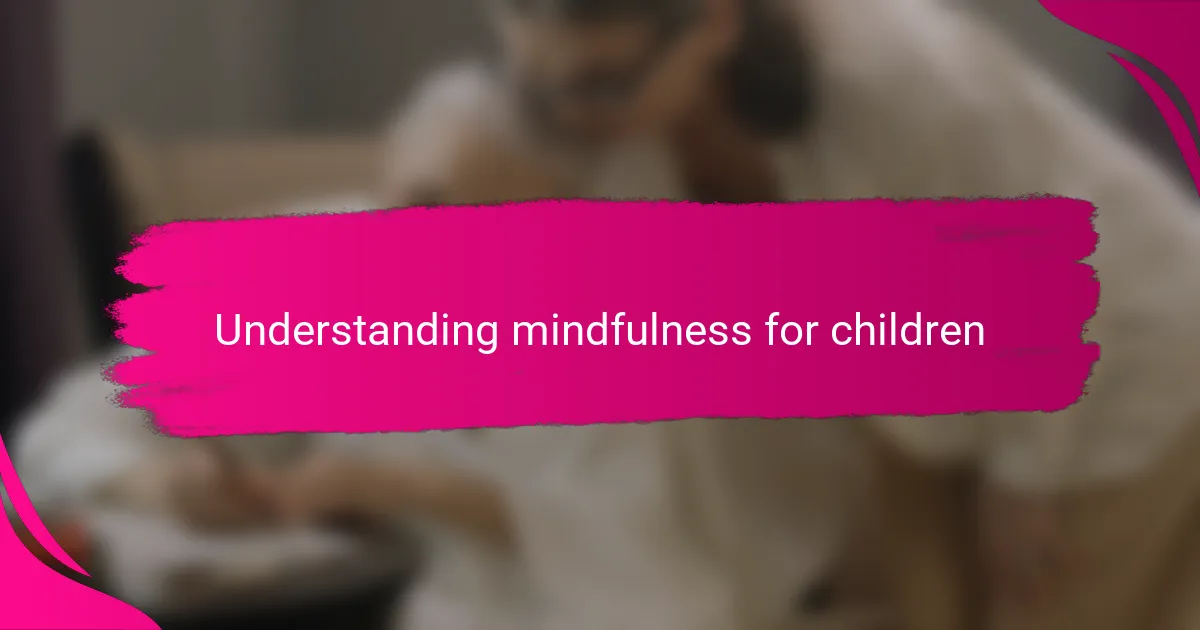
Understanding mindfulness for children
Mindfulness for children means helping them focus on the present moment without judgment. I’ve noticed that when my child practices even simple mindfulness exercises, like paying attention to their breath or the sounds around them, they seem calmer and more curious about their feelings. Have you ever watched a child deep in thought, fully absorbed in what they’re doing? That’s a glimpse of mindfulness in action.
What strikes me is how natural mindfulness can be for kids—they often don’t need complicated instructions. Still, I sometimes wonder how to explain this concept in a way that truly resonates with them. For me, using playful language and relatable examples makes mindfulness feel less like a task and more like an adventure to discover their own inner world.
Understanding mindfulness also means recognizing it as a tool for emotional self-awareness. I’ve seen my child respond to stress or frustration by pausing and tuning inward, which is something I didn’t expect so early on. It’s amazing how this simple practice can empower kids to navigate their emotions with gentleness and confidence.
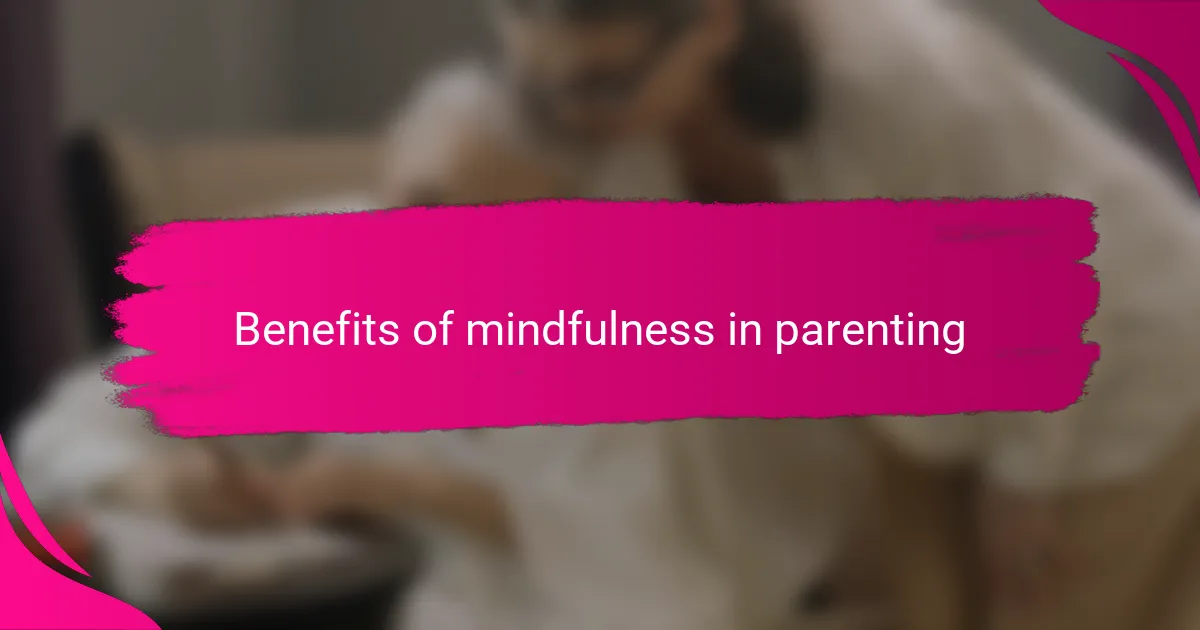
Benefits of mindfulness in parenting
What I find most rewarding about incorporating mindfulness into parenting is how it shifts my own reactions. Instead of snapping when my child acts out, I’m able to pause, breathe, and respond with more patience. It’s like mindfulness creates this gentle space between stimulus and response that makes parenting feel less reactive and more intentional.
Have you ever noticed how kids mirror our emotions? When I stay calm and grounded through mindfulness, my child often picks up on that energy and becomes calmer too. It’s incredible to see how my own practice influences their mood, making our home a bit more peaceful even during chaotic moments.
Another benefit I’ve experienced is how mindfulness strengthens our connection. When we do simple exercises together, like mindful listening or sharing what we notice, it opens up honest communication. Those moments feel special and build trust because we’re fully present with each other, not distracted or caught up in the rush of daily life.
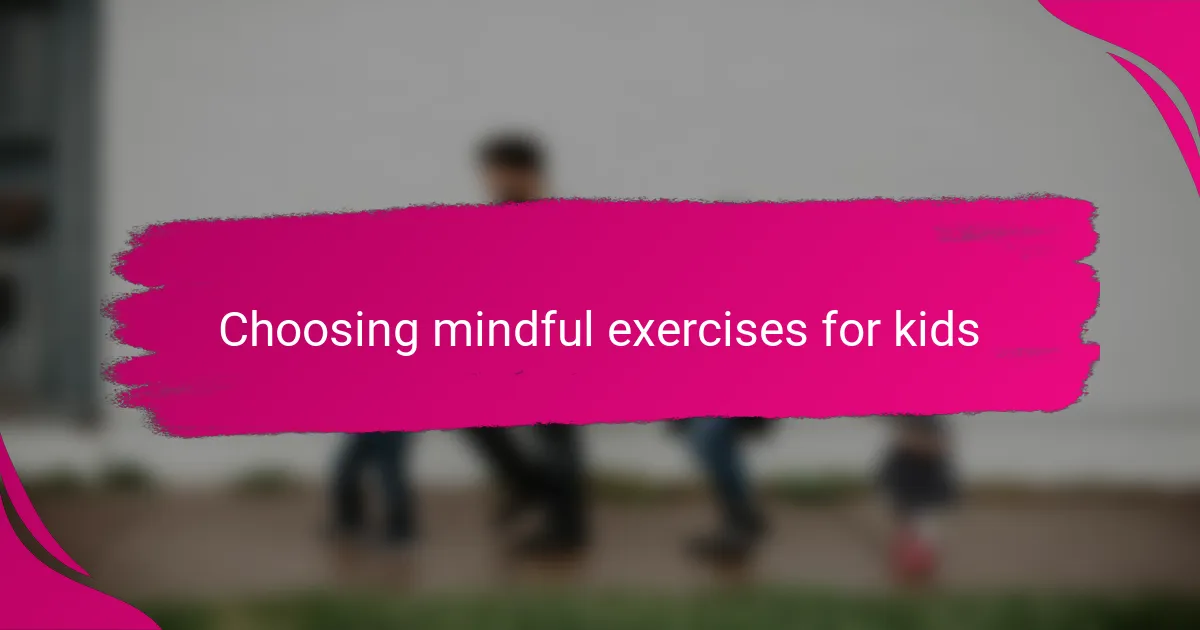
Choosing mindful exercises for kids
Choosing mindful exercises for kids starts with tuning in to what truly holds their attention. I’ve learned that activities involving the senses—like feeling textures or noticing smells—capture my child’s curiosity far more than anything too abstract. Have you noticed how children naturally explore the world around them through touch and sight? That’s why grounding exercises that engage their senses often feel like play rather than practice.
It’s important to find exercises that match your child’s age and energy level. For instance, my energetic toddler loves short, movement-based mindfulness like “animal walks,” while my older child prefers quiet breathing or guided imagery. Have you ever tried adapting an exercise on the spot because you sensed your child’s focus wavering? That flexibility makes mindfulness feel approachable rather than forced.
I also lean towards activities that offer a shared experience, because mindfulness becomes richer when it’s connected to relationship. Sitting down together to watch the clouds or listen to birds not only calms my child but also reminds me to be present. Have you experienced how these moments of shared awareness deepen your bond? It’s those simple, intentional choices that make mindful exercises both meaningful and memorable.
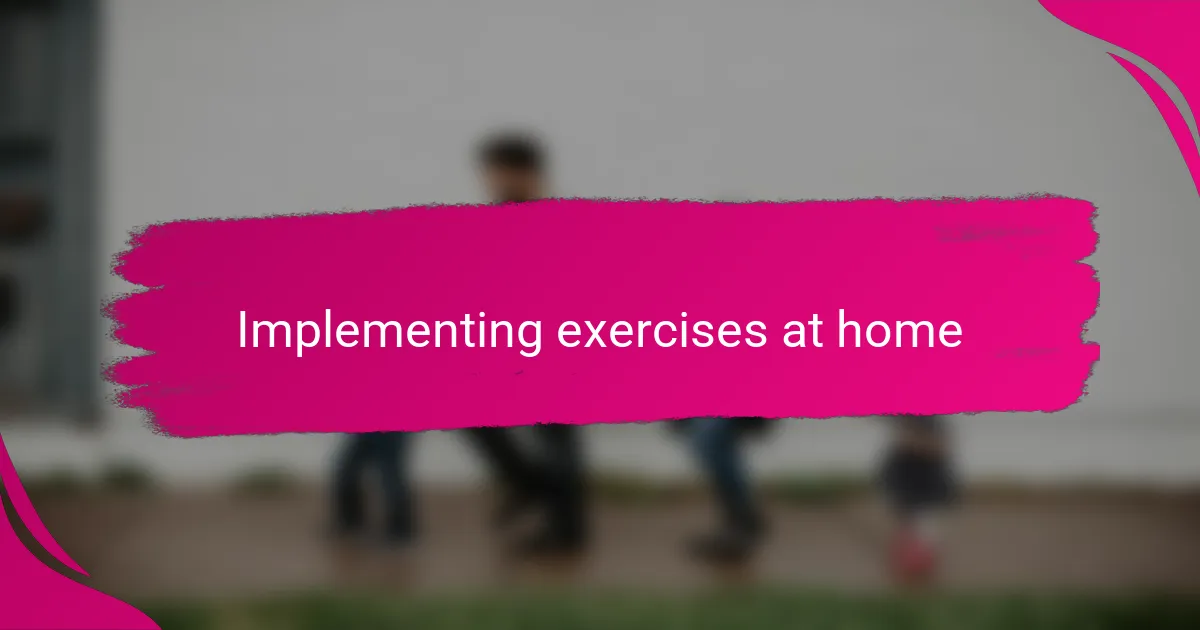
Implementing exercises at home
Bringing mindfulness exercises into our home routine wasn’t as complicated as I expected. I found that setting aside just a few minutes before bedtime worked wonders—my child seemed to settle more easily after a quick breathing exercise. Have you tried turning a regular moment, like waiting in line or getting dressed, into a chance to pause and breathe together? Those little pockets of calm became surprisingly powerful.
At first, I worried my child might lose interest quickly, but keeping the exercises short and playful helped maintain their curiosity. For example, pretending to blow up a big balloon while exhaling made the practice feel like a fun game rather than a strict chore. Have you noticed how incorporating imagination can make mindfulness more inviting for kids? It really changed the whole experience for us.
I also discovered that consistency is key, but flexibility matters just as much. Some days we follow a routine; other days we simply listen to sounds during our evening walk or watch how the light changes through the window. These moments of mindful presence don’t need to be formal—they just need to be shared. Do you find that allowing space for spontaneity keeps the practice alive and joyful in your home? That balance made all the difference for us.
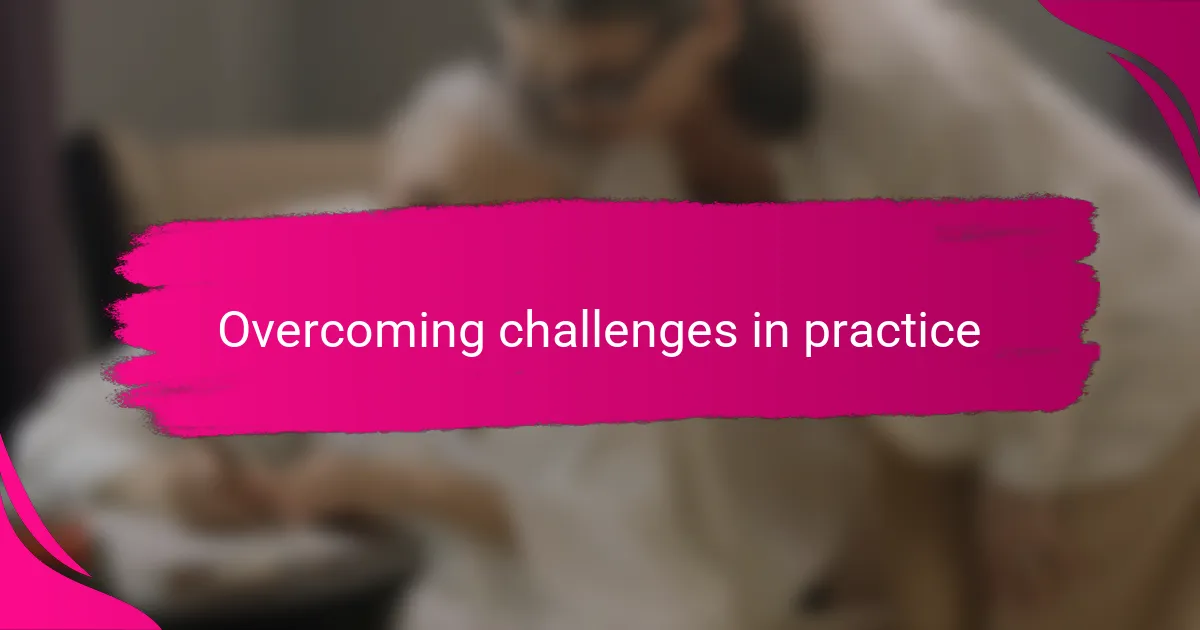
Overcoming challenges in practice
Challenges definitely popped up as we tried to make mindfulness a regular part of our day. Sometimes my child just wasn’t in the mood or quickly grew restless, which made me question if I was pushing too hard. Have you ever felt that tension between wanting to help and respecting their space? I found that stepping back and offering gentle invitations rather than demands helped ease those moments.
I also struggled with my own expectations—expecting mindfulness to deliver obvious results right away. It took me a while to realize that progress is subtle and often invisible in the moment. When my child suddenly paused to take a deep breath during a frustrating episode, I saw that the seeds were taking root, even if the changes weren’t dramatic or instant.
Another hurdle was finding the right time amid our busy schedules. Mornings felt rushed, and evenings sometimes too tired for new activities. So, I learned to embrace short, flexible practices, like a quick sensory check-in while folding laundry, which kept mindfulness doable without adding stress. Have you discovered those little pockets that naturally fit into your day? That adaptability really made the practice stick for us.
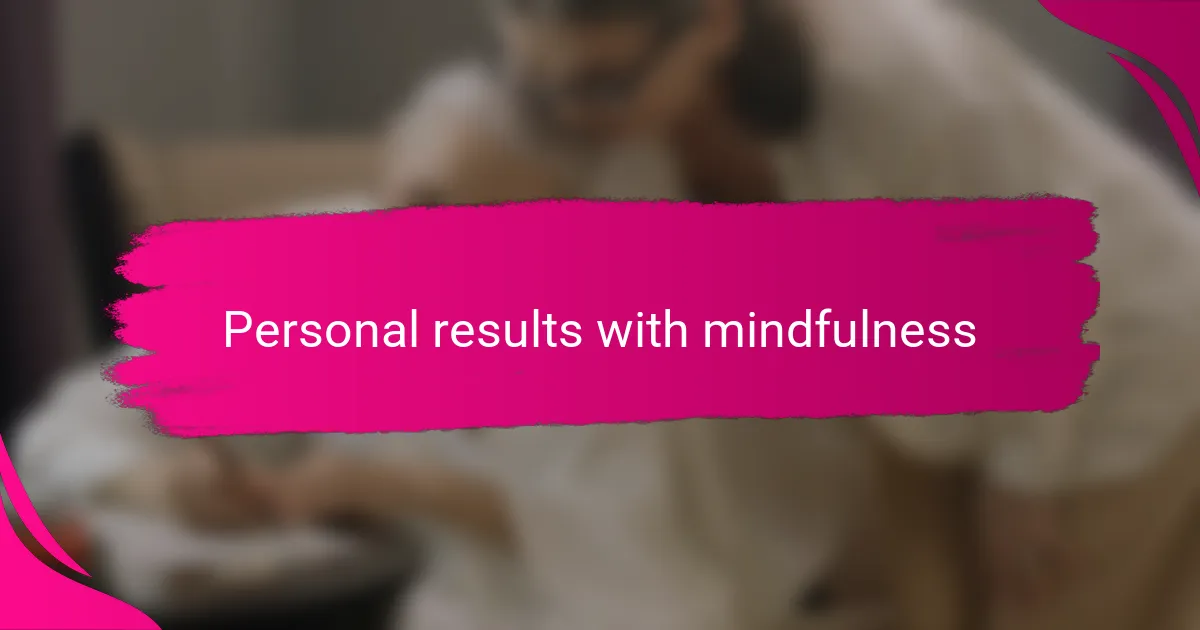
Personal results with mindfulness
I’ve noticed that after just a few weeks of regular mindfulness exercises, my child seems noticeably more present and less reactive. It’s as if those moments of quiet reflection give them a pause button in a whirlwind of emotions. Have you ever caught your child taking a deep breath before responding to frustration? Seeing that subtle shift firsthand was really encouraging for me.
Sometimes, the changes feel small but meaningful—like my child asking to do a breathing exercise before bedtime or spontaneously pointing out a bird’s song during a walk. Those instances make me realize mindfulness isn’t just an activity; it’s becoming part of their emotional toolkit. It’s rewarding to witness how these small practices build their confidence in managing feelings.
Still, I wonder how much of this progress depends on consistency versus simply being patient with the process. I’ve learned to celebrate every tiny win, even when the day-to-day results aren’t obvious. After all, nurturing mindfulness is a journey, not a race, and appreciating each step has deepened my own appreciation for patience and presence.
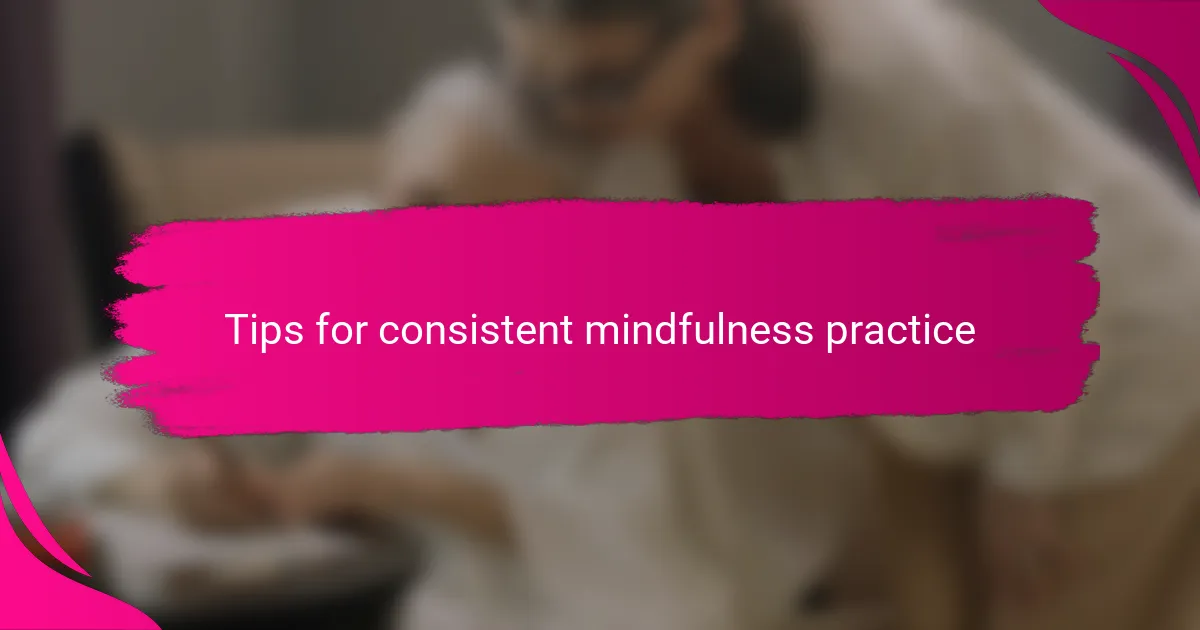
Tips for consistent mindfulness practice
Staying consistent with mindfulness exercises can be tricky, especially with kids who have ever-changing moods and attention spans. I found that setting a specific time each day—no matter how brief—helps create a gentle routine that my child comes to expect without feeling pressured. Have you noticed how predictable rhythms provide a comforting structure, even for something as simple as mindful breathing?
At the same time, I learned that flexibility is just as important as consistency. Some days we follow our usual routine, and other days we let mindfulness flow naturally—like pausing to notice birdsong during a walk or a shared moment of silence before a meal. Does giving yourself permission to adapt keep the practice fresh and inviting rather than a chore? For me, that balance was key to making mindfulness a joyful habit.
Another tip I picked up is involving the whole family whenever possible. When mindfulness becomes a shared activity, it feels more like a team effort and less like a task aimed just at the child. Have you tried joining in a simple breathing exercise or mindful listening session? Those shared experiences often deepen connection and motivate everyone to keep coming back to the practice.
